With only about 40 kilometres cycled, Andorra was the smallest country that we crossed on our trip. But it was also the one where we crossed the highest altitude (this often surprises people, as they think that the Andes must have been much higher, but in fact the mountain passes in the southern Andes are not very high), and a country where we hadn’t been before. And even tiny countries deserve their own blog post, so here we go!
The route
We just crossed Andorra on its main road, without venturing into the surrounding mountains and steep roads. On one day, we started in la Seu d’Urgell in Catalunya and cycled the twenty kilometres up to Andorra la Vella on the national road (there’s no other option). We had to share the road with numerous cars, trucks and motorbikes. Apart from the river down in the gorge and the steep, forested mountain flanks on both sides, there was not much nature around. The road is lined with service stations, supermarkets and shopping centres. The noisy traffic goes right through the town of Andorra and there’s little possibility to escape it, but it was all quite organized and not difficult to cycle through (although not very nice).
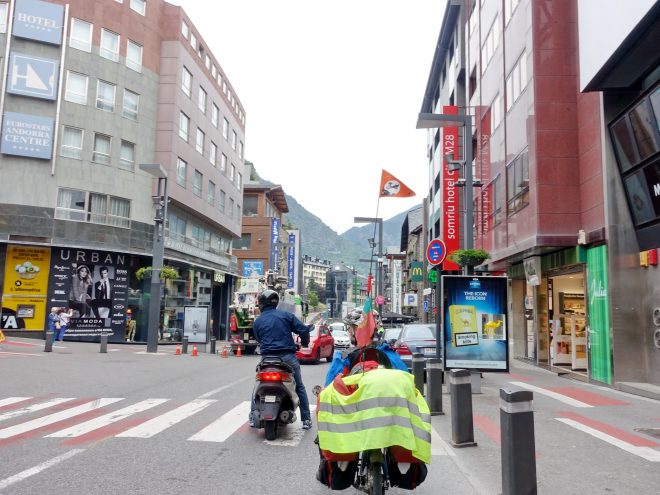
In Andorra la Vella we mostly spent the afternoon relaxing and recovering for the next day’s climb. We found not much interest in the town. It resembles a huge shopping centre, with French and Spanish tourists on shopping sprees and lots of almost-empty hotels (we were there at the end of May). There is an impressive spa building whose architecture is quite interesting, but the spa itself is very expensive, so we contented ourselves with the small jacuzzi and sauna at our hotel.
On the next day, after filling our stomachs at the hotel’s breakfast buffet, we continued pedalling up the same national road towards Port d’Envalira, the highest road pass in the Pyrenees. This seemed to be a well-known road cycling route, as there were signs every kilometre stating the current altitude, the next kilometre’s mean inclination, and the missing distance and elevation until the top.
Traffic was still heavy, but drivers usually behaved a bit like in Spain, giving us ample space when overtaking. Traffic calmed down noticeably after the village of Canillo, and the scenery became less built-up and more natural as we climbed up further. It was a long way up, and we arrived at the top of the pass after the final switchbacks in mid-afternoon.
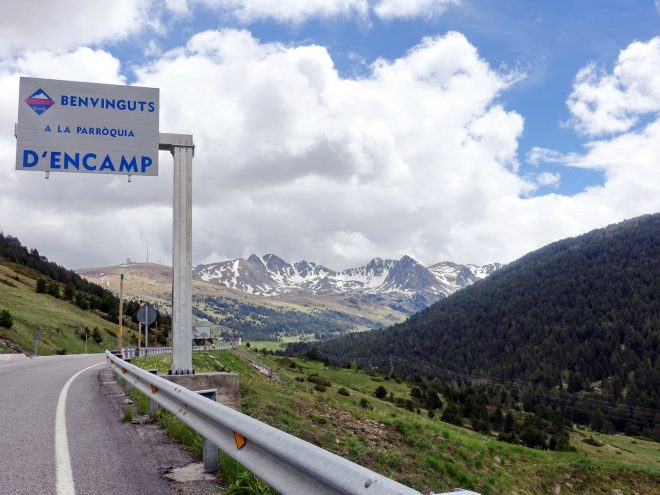
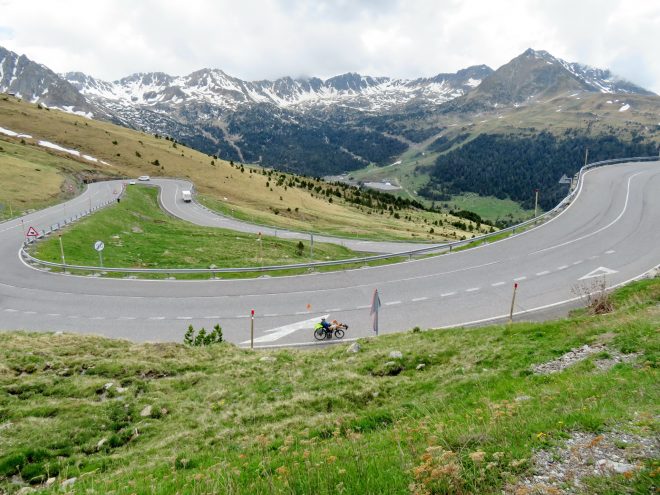
Although the weather was overcast, we had some nice views of the surrounding mountains from the pass, which otherwise was not especially inviting for a rest, as there was nothing of interest despite its three service stations. The road took us downhill fast, and after a few kilometres we reached the village of Pas de la Casa. We found this to be the most depressing place in Andorra. Dozens (or probably hundreds) of French were driving up to get petrol (a bit cheaper than in France) at a giant service station on the outskirts of the village. The small village itself was full of cheap-looking supermarkets. We decided that we would do our grocery-shopping in France on the next day and carried on downhill without stopping.
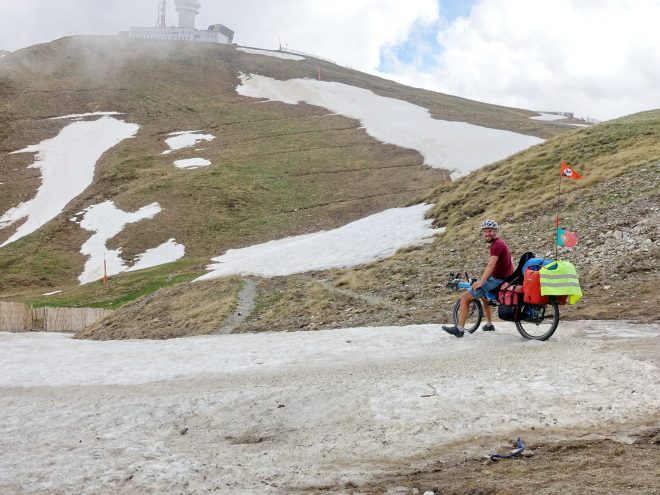
We passed the French customs a couple of kilometres down the hill. The customs officials must have been terribly bored of checking people’s car boots for unallowed purchases all day, as they came over to chat with us for a while. It was also exactly at the customs building that our bike computer reached the 12’000 kilometres!
Although it was already late afternoon, we decided to continue to a camp site just after Ax les Thermes. It was all downhill and easy riding, except for the drivers – all of a sudden, we were reminded that we had left Spain and its (mostly) bike-friendly drivers. Here in France, people seemed impatient, driving up close behind us and overtaking aggressively and dangerously. We didn’t get many friendly hellos and waves any more – we somehow didn’t feel welcome on this road. This is the only road coming down from Andorra, so it’s somehow the main highway through the valley, until further on it becomes a real highway, and more alternative roads appear.
Practicalities for cycling in Andorra
There is only one main road that crosses Andorra from Spain to France, so there’s no need for a map, unless you want to explore the side roads and climb the surrounding mountains. The traffic is dense most of the time, but the road is quite large and most people drive Spanish-style, being very accustomed to cyclists (except for the French side of the road, which is narrower and drivers are more inconsiderate).
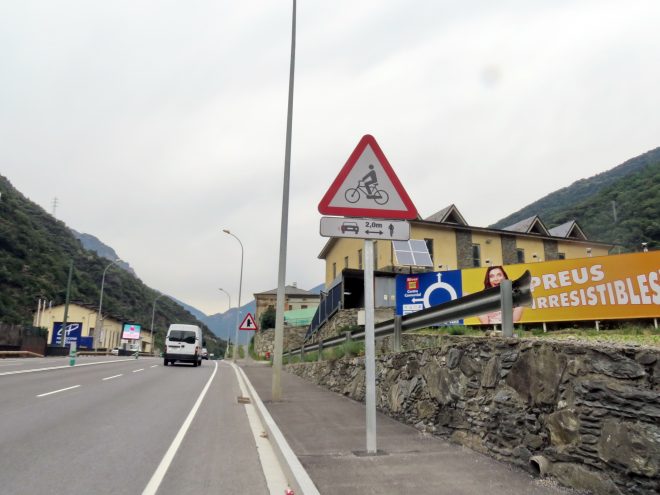
There are numerous shops and service stations along the road, making it easy to get food and drinks, although the infrastructure thins out as you get higher up, where most places seem to be geared towards winter sports. After Canillo, most hotels and restaurants were closed for the season (or definitely closed and for sale). There was a big choice of hotels in the town of Andorra, and many had very competitive, off-season prices (this was end of May). This may actually be a major draw for cycle travellers, as it’s easy to find a good-priced hotel room to relax before or after some tiring days pedalling up the mountains. For 65 Euros, we got a small-ish but nice room in a four-star hotel with a small spa (jacuzzi and sauna – nice for relaxing those aching muscles) and a good breakfast buffet.
We didn’t feel the need for shopping in Andorra, so we don’t know if the (supposedly lower) prices are actually worth the trip (probably not).
So, how was it?
We chose this road mostly for the fun of seeing what Andorra was like, as we had never been there. The climb over Port d’Envalira was long and tiring, but not too tough, and rewarding in terms of scenery. The traffic was dense until the village of Canillo, and the ride itself was not the nicest, but we have known much worse roads on our trip.
So, should you go there? If you want to experience the scenery of the Pyrenees – don’t go because there are certainly many better and nicer options. People told us about quiet mountain roads in the Spanish Pyrenees that would certainly be much more rewarding in terms of scenery. If it’s for the sake of having been to Andorra and having seen all the hype about it – go for it (if you don’t mind long climbs – Port d’Envalira is the highest pass in the Pyrenees).























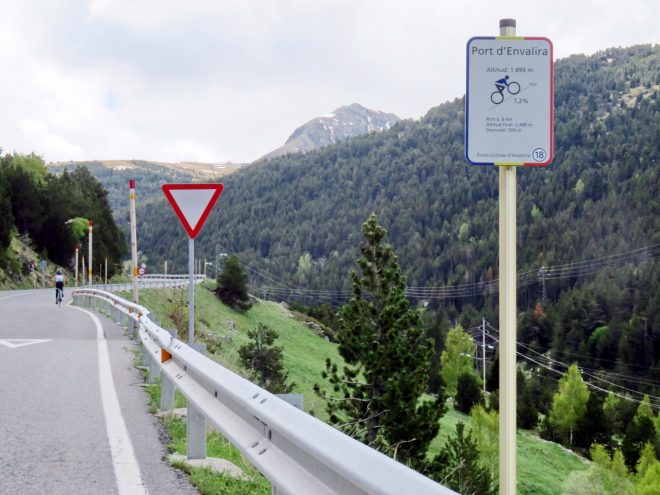
2 thoughts on “So, how was it? Two recumbents in Andorra.”